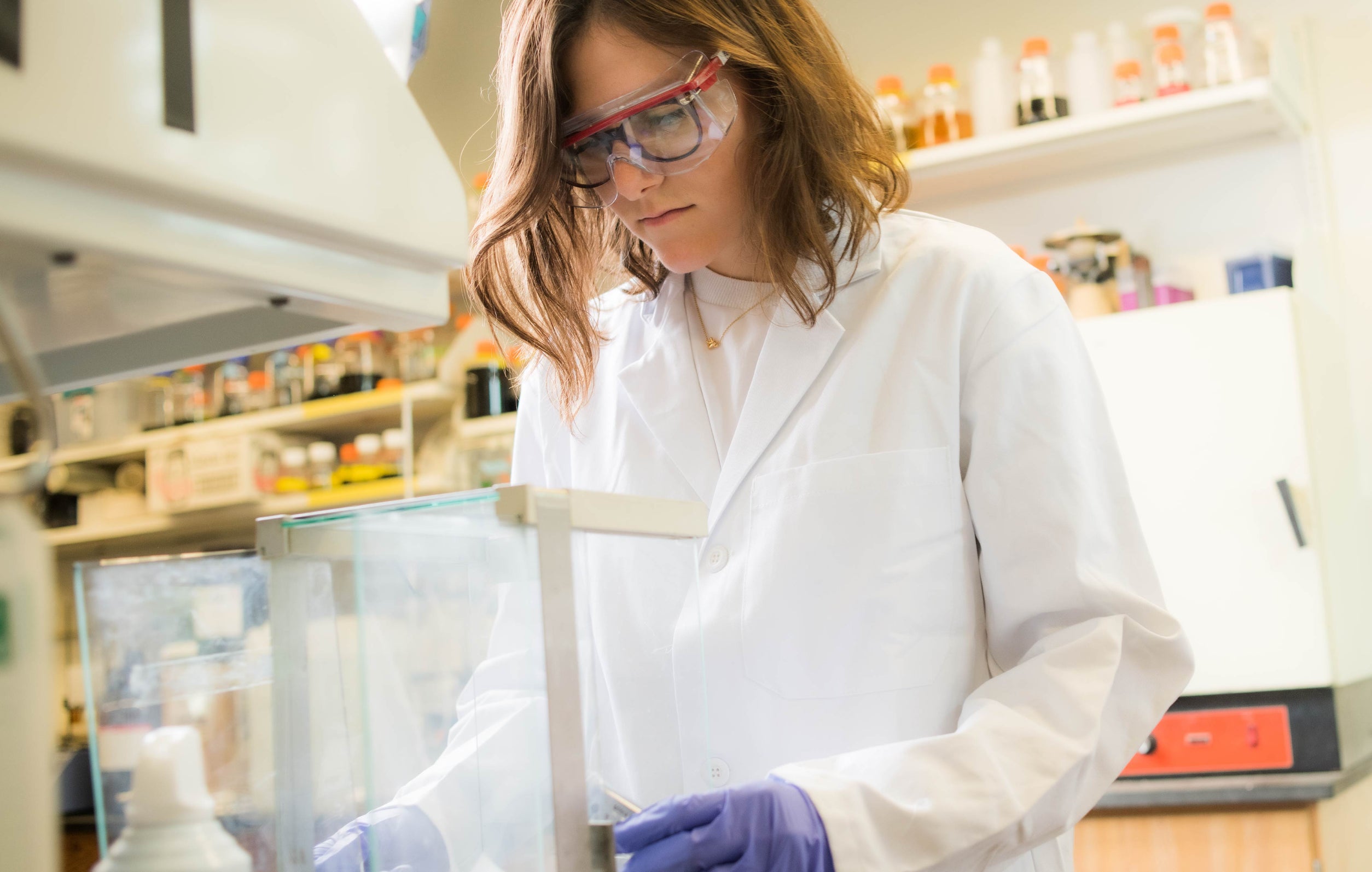
The new Engineering and Science Building will allow Rice to build on its renowned graduate programs, offering unparalleled research opportunities to promising young scholars like Emily McHugh ’22. A fifth-year Ph.D. student in chemistry, McHugh researches biomedical applications of materials chemistry in the lab of James Tour, the T. T. and W. F. Chao Professor of Chemistry and Professor of Materials Science and Nanoengineering.
McHugh inherited her passion for science from her father, a chemical engineer who encouraged her curiosity and did chemistry problems with her when she was a child. As an undergraduate at the University of Texas, McHugh pursued a B.S. in chemistry and initially planned to attend medical school. When a family friend was paralyzed in an accident, however, she became interested in spinal cord research and realized that she wanted to work on developing drugs and medical technology to treat traumatic injury. “I decided that researching new treatment methods would enable me to impact a greater number of patients than I would be able to reach as a practicing physician,” she explains.
McHugh learned about Tour’s lab from a Rice alumna and was particularly intrigued by his work on materials for spinal cord repair. “Rice seemed like the perfect fit for me,” she relates. For McHugh, training with a scientist of Tour’s caliber has been one of the most rewarding aspects of her Rice experience. “It is an honor to work with someone who is renowned in his field but also is so approachable and committed to his students,” she reflects. “Dr. Tour’s passion for research is infectious and it motivates us to be better scientists.”
In Tour’s lab, McHugh researches the development of synthetic antioxidants from carbon nanomaterials to treat oxidative stress, a condition of imbalance between free radicals and antioxidants in the body that results in cell and tissue damage and can contribute to the emergence of chronic conditions such as cancer, diabetes, cardiovascular disease and neurodegenerative disease. “Normally, natural antioxidants are able to quench reactive oxygen species,” McHugh explains, “but the body’s innate antioxidant defense system is overwhelmed in times of oxidative stress.” The synthetic antioxidants she works with, however, are successful at mitigating the damage caused by oxidative stress. Working in collaboration with researchers from the Texas Medical Center, McHugh has found that these materials have the potential to significantly improve recovery outcomes for conditions including stroke, traumatic brain injury and dementia.
McHugh’s work has led to the discovery of a promising drug candidate, and she is now focused on product development. “I am currently investigating how we can synthesize the nanomaterial drug in a way that would make it easily and safely translatable to an industrial scale, as well as more likely to acquire FDA approval” she explains, noting that this is necessary to prepare the drug for clinical studies. The ability to collaborate with medical scientists on the application of her research has been a highlight of McHugh’s time at Rice. “I think that one of the most interesting things about chemistry is being able to apply the materials you develop, especially in the biomedical field,” she states. “I really appreciate that in Dr. Tour’s lab we are able to work closer to the end-product of our research.”
McHugh’s experience working in Tour’s lab has inspired her to pursue a career as a process chemist in the pharmaceutical or biotech industry after she completes her Ph.D. “I really enjoy working to optimize nanomaterials to make them into the best product possible,” she reflects, adding that it is her experience at Rice that led to this realization.
If you are interested in helping the next generation of scientists and innovators pursue pathbreaking collaborative research like Emily’s contact your development officer or Sara L. Rice, senior director of development, at 713-348-3189 or sdl@rice.edu.
